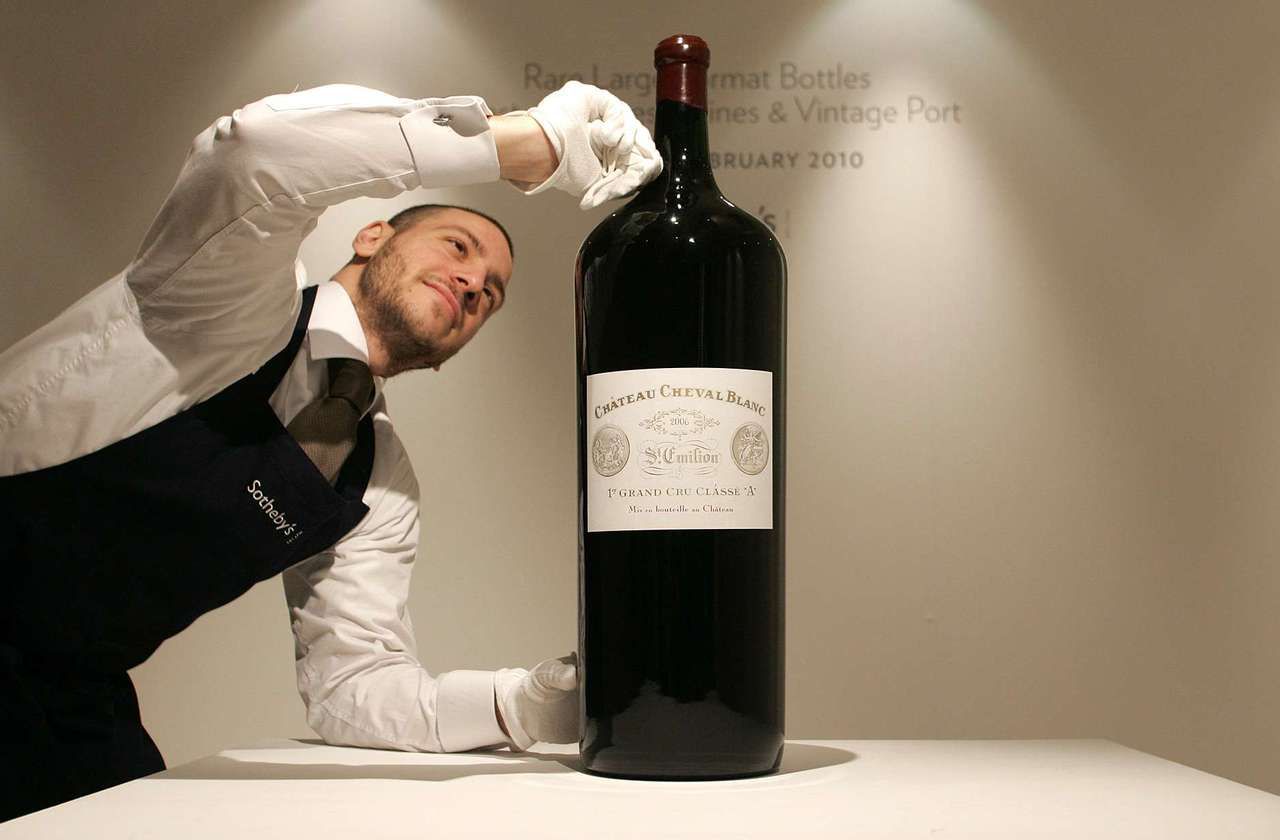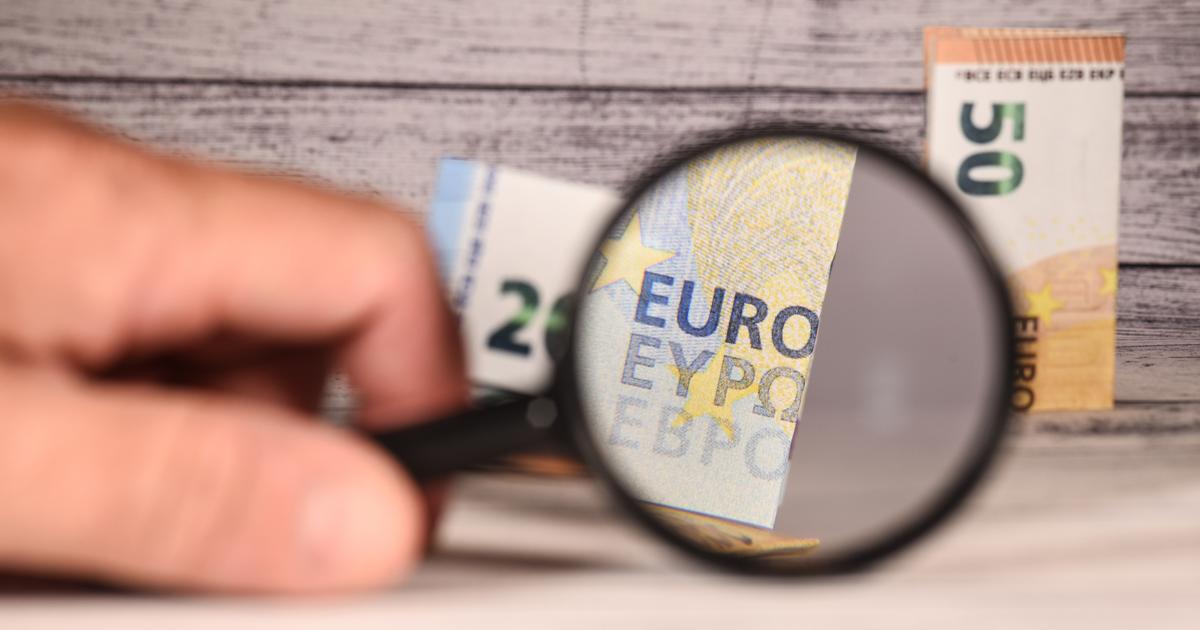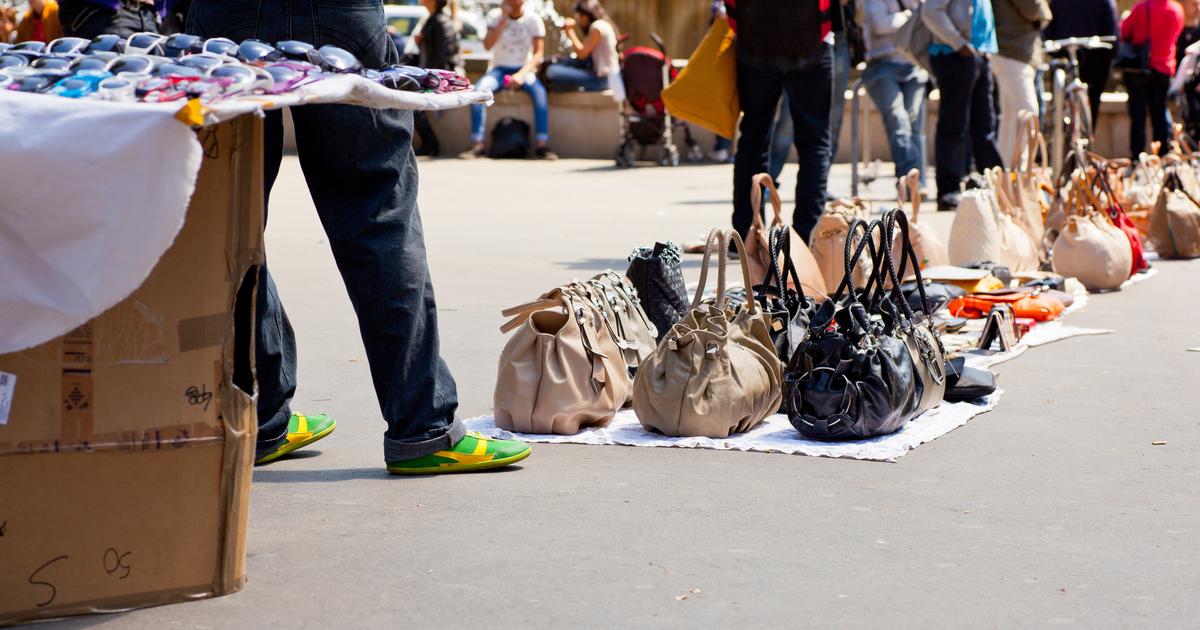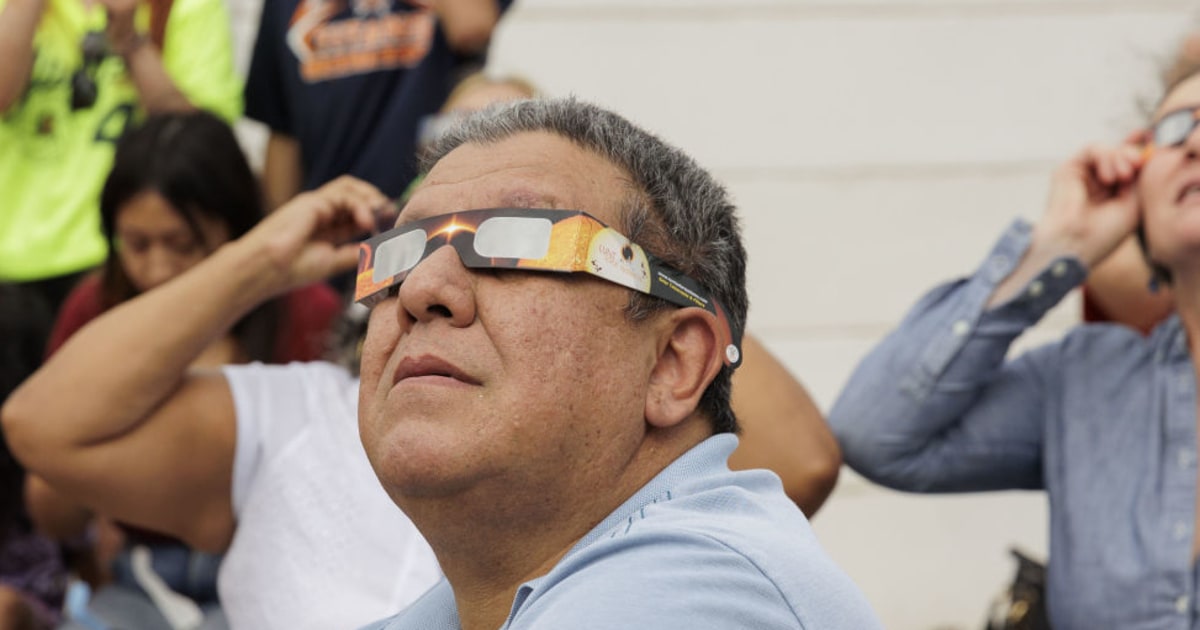Petrus's two magnums seem larger than life, but one detail bothers Michael Egan.
The label indicates a 1921 vintage. Strange… The Englishman does not remember ever having seen bottles of such a capacity dated from that year.
And for good reason, he will later discover that the famous domain located in Pomerol, in the Libournais (Gironde), had never produced any!
Armed with his digital microscope, shaped like a thick pen, which allows the image to be magnified on a computer screen, this wine specialist sifts through the two XXL containers, looking for the slightest anomaly.
This in-depth examination confirms his intuition.
Elements do not "stick".
The labels are slightly too large, and the capsules, admittedly genuine, actually date from the 1960s. His verdict is final.
The two pseudo-grands crus bought from a Californian merchant are fakes.
The buyer, Russell H. Frye, an American collector who made his fortune in software, was fooled!
The year is 2006. Michael Egan's career as an independent expert has only just begun.
Established in Gironde for fifteen years, this fine connoisseur travels the world in order to authenticate a bottle or a lot, on behalf of collectors, merchants, sommeliers of great restaurants… At 61, he is one of the most expert experts. most requested.
His diary is as full as the shelves in the cellars of his wealthy clients.
Barely returned from a trip that took him to Sweden and the United States, the Sherlock Holmes of wine is preparing, in this month of December 2019, to leave his castle of Saint-Médard-en-Jalles the next day. , an old vineyard of 30 ha near Bordeaux, to fly to England where a new mission awaits.
British expert Michael Egan regularly collaborates with the FBI./Patrick Bernard
It was in London, at Sotheby's, one of the most prestigious auction houses in the world, that Michael Egan acquired, from 1981 to 2005, an encyclopedic memory on exceptional wines.
Hired at the age of 22 as a simple order preparer in the wine department until taking the lead, he kept treasures in his hands every day, authentic grands crus from extraordinary family collections, sometimes dating from the 18th century. .
Bottles rarely bought to be uncorked
Nectars with rare aromas, whose classification criteria, which vary depending on the region, sometimes take into account the town and domain of origin (for Bordeaux), sometimes the plot of vines harvested (for Burgundy).
Already holding a diploma in oenology, he perfected his knowledge there.
He observes the patina of the glass, the characteristic molds of the labels of certain cellars, the inscriptions on the corks of each estate or vintage ...
READ ALSO>
Vast wine fraud: the Côtes-du-Rhône was a piquette
In nearly forty years of career, this specialist has held in his hands more than 300,000 grands crus.
To flush out counterfeits, he relies more on his eyes than on his palate.
The bottles he examines are often worth several thousand or even tens of thousands of dollars.
Their very advanced age and the speculation to which they have been the object since the mid-1980s are such that they are rarely bought to be uncorked ... The price of certain vintages of Burgundy, the price of which now often exceeds that of Bordeaux, has reached peaks.
In 2018, for example, a buyer spent nearly 500,000 euros at Sotheby's in New York to buy a Romanée-Conti from 1945. It is the most expensive bottle in history!
"Some people stain labels with tea"
Every day, Michael Egan tracks down the slightest clue.
A red with a slightly too dark dress?
A tiny printing defect?
Ink too bright to match the vintage advertised on the label?
Industrial white glue used instead of animal-based glue, which is supposed to turn yellow over time?
Is the bottom too deep, or not deep enough, for the period indicated?
And counterfeiting is no longer in doubt for the expert, regularly requested by the FBI.
Newsletter - Most of the news
Every morning, the news seen by Le Parisien
I'm registering
Your email address is collected by Le Parisien to enable you to receive our news and commercial offers.
Learn more
“To artificially age the labels, some people stain them with tea or put them in the oven to brown them.
Others insert sand or ink into the bottle to reproduce the deposit linked to time, ”reveals the specialist.
In a filing cabinet, he keeps a few of his trophies, such as this counterfeit Petrus label, stamped with a Saint Peter with crudely printed details.
A memory of the Rudy Kurniawan affair, one of the most famous counterfeiters of grands crus in history, sentenced in August 2014 to ten years in prison and $ 28.5 million in damages.
Bottles sold at auction are often treasures worth several thousand or even tens of thousands of euros. / AFP / Stan Honda
It was in 2008 that the expert was first confronted with the work of this rare wine merchant who had become the darling of Hollywood magnates.
Mandated by a wealthy individual who is eyeing a lot offered for sale, Michael Egan identifies for $ 5 million fake.
The capsules are slightly wrinkled and suggest that they have been removed, then put back.
He narrowly prevents his client from bidding.
“At least 90% of the bottles were fake.
There was a jéroboam (3 liters) from Domaine de la Romanée-Conti from 1962, a dozen bottles from Domaine Georges Roumier from 1952, and as many Cheval-Blanc from 1947, remembers Michael Egan.
It was unlikely to find such a large number of rare vintages on the market!
"
The Burgundian winegrower plays the vigilante
Michael Egan isn't the only one to sniff out the Rudy Kurniawan scam.
At the same time, a Burgundian, Laurent Ponsot, fourth generation of the prestigious Ponsot family estate, sets out on the heels of the crook.
"It was an American friend who put me in my ear on April 23, 2008. In an email, he asked me when our production of clos-saint-denis (a grand cru from the Côte de Nuits), because he had spotted in the catalog of an auction which was to take place in New York two days later Ponsots dating from 1949, 1966 and 1971. "
Laurent Ponsot, fourth generation of the prestigious Ponsot family estate, set out on Rudy Kurniawan's heels./DR
Impossible: the first Clos-Saint-Denis on the estate date from 1982!
The stubborn, goatee, pepper-and-salt-haired wine grower calls the auctioneer and jumps on a plane to make sure the lots have been withdrawn from sale.
“Out of nearly 100 Ponsot bottles worth a total of $ 1.2 to $ 1.6 million, only one was true!
», Remembers this 66-year-old lover of the vineyard, still stunned.
The next day, he invited the owner of the disputed bottles, a certain Rudy Kurniawan, to lunch in a starred restaurant to try to find out more about their provenance.
In vain.
The thirty-something, who is described as very sure of himself, is elusive.
He claims to know nothing.
Laurent Ponsot does not believe a word of it, he decides to investigate.
Who really is this so-called Indonesian annuitant capable of buying and selling a million dollars of grand cru each month?
Tucked away "in an old car and behind dark glasses", the winegrower sets about spinning the mysterious Kurniawan.
It was the start of a two-year “crusade” which cost the winegrower a trifle of 150,000 euros.
Laurent Ponsot discovers that the one nicknamed "Doctor Conti", because of his passion for the very expensive Romanée-Contis, systematically recovers the empty bottles of the real great vintages tasted in the private parties in which he participates - for his "collection" , he said.
Increasingly suspicious, the winemaker travels to Jakarta, Indonesia, and Singapore, meets some of the forger's contacts, and ends up getting his hands on the person selling him the old paper used to print the counterfeit labels.
A real laboratory
Le Bourguignon transmits the results of its investigations to the FBI.
The search carried out in March 2012 in Rudy Kurniawan's villa, in the suburbs of Los Angeles, is devastating.
The house, kept at 15 ° C, an ideal temperature for storing wine, is full of false labels from Mouton Rothschild, Château Latour, Petrus… But also wax, cork stamps bearing the names of great estates, bare bottles in waiting to be made up and annotated formulas proving that the forger was experimenting with less quality wine blends to better deceive his world.
A real laboratory.
Grand cru counterfeiters reproduce the original labels using stamps and other ploys. / AFP / Stan Honda
"I got involved in this battle like Don Quixote, because I could not bear to have the spirit of wine so dirty in order to make money", analyzes Laurent Ponsot.
At the beginning of the 2000s, this solitary vigilante had already passed himself off "by game" for a sommelier in order to trace the trail of a Dom Pérignon forger, based near Bergamo in Italy, who collected empty bottles from restaurateurs. and filled them with a vulgar sparkling wine to sell them at a high price.
He had then handed it over to the transalpine police.
He likes to complicate the life of crooks
Even today, thousands of bottles falsified by Kurniawan lie dormant in cellars around the world, according to specialists.
But the extent of fraud in exceptional wines remains difficult to measure.
In France, the authorities are unable to provide figures.
The first victims, buyers or owners of castles, avoid filing a complaint so as not to tarnish their image, and disputes are often resolved amicably.
However, 7% to 10% of the grands crus in circulation could be fake, if we are to believe Michael Egan.
“Of the 7,000 bottles that I appraised in 2019, around 500 were counterfeit,” says the specialist.
He noted an upsurge in fraud concerning recent grands crus, that is to say after 1990. “The reasons are simple.
Demand is higher than that for very old vintages, because the prices are more reasonable, the number of bottles on the market is greater - which attracts less attention -, and the work of counterfeiting is less complicated to carry out. », Points out the specialist.
Also, to fight fraud, some large areas have over the past fifteen years equipped themselves with anti-counterfeiting devices: chips implanted under the caps to ensure the traceability of the bottles, elements which only appear under ultraviolet light ... But these technologies are costly. expensive to develop and systematize.
"In Burgundy, out of a hundred well-known houses, only half have invested in such systems", estimates Laurent Ponsot.
Converted since 2017 into the trade of high-end Burgundies, he also enjoys complicating the lives of counterfeiters by equipping his precious goods with discreet protections.
The police, too, have a nose
In this hunt for counterfeiters, the State is not left out.
If there are no brigades in France specializing in the fight against the counterfeiting of great wines, police, gendarmes and customs officers are watching over things.
Most often, their investigations are launched after the filing of a complaint by a buyer, as in this croquignolesque case involving Christophe Robert, a 56-year-old former footballer who has been converted into the wine business.
The ex-striker, convicted in 1995 during the trial of the match-fixing OM-Valenciennes, resold to merchants false grands crus of Pauillac and Saint-Julien, bottles bought under the cloak from a fairground in a parking lot in Béziers.
With the help of the SCL laboratory in Pessac - a state-of-the-art unit common to the customs and fraud control services, capable of determining the vintage and the origin of a nectar by studying its composition - the Girondins gendarmes are easily managed to confuse the sourfin.
“In many surveys, we see that the concealment sector is international and involves the complicity of traders.
Counterfeit bottles are most often sold in the United States and China by organized gangs ”, specifies Colonel José Montull, head of the Bordeaux research section for three years.
Sometimes, investigators come across fake grands crus on sale between private individuals.
"It is then the work of isolated individuals", warns Romain Roussel, deputy director of the cabinet of the General Directorate of Competition, Consumption and the Repression of Fraud… Bon Coin does not necessarily rhyme with good wine .















